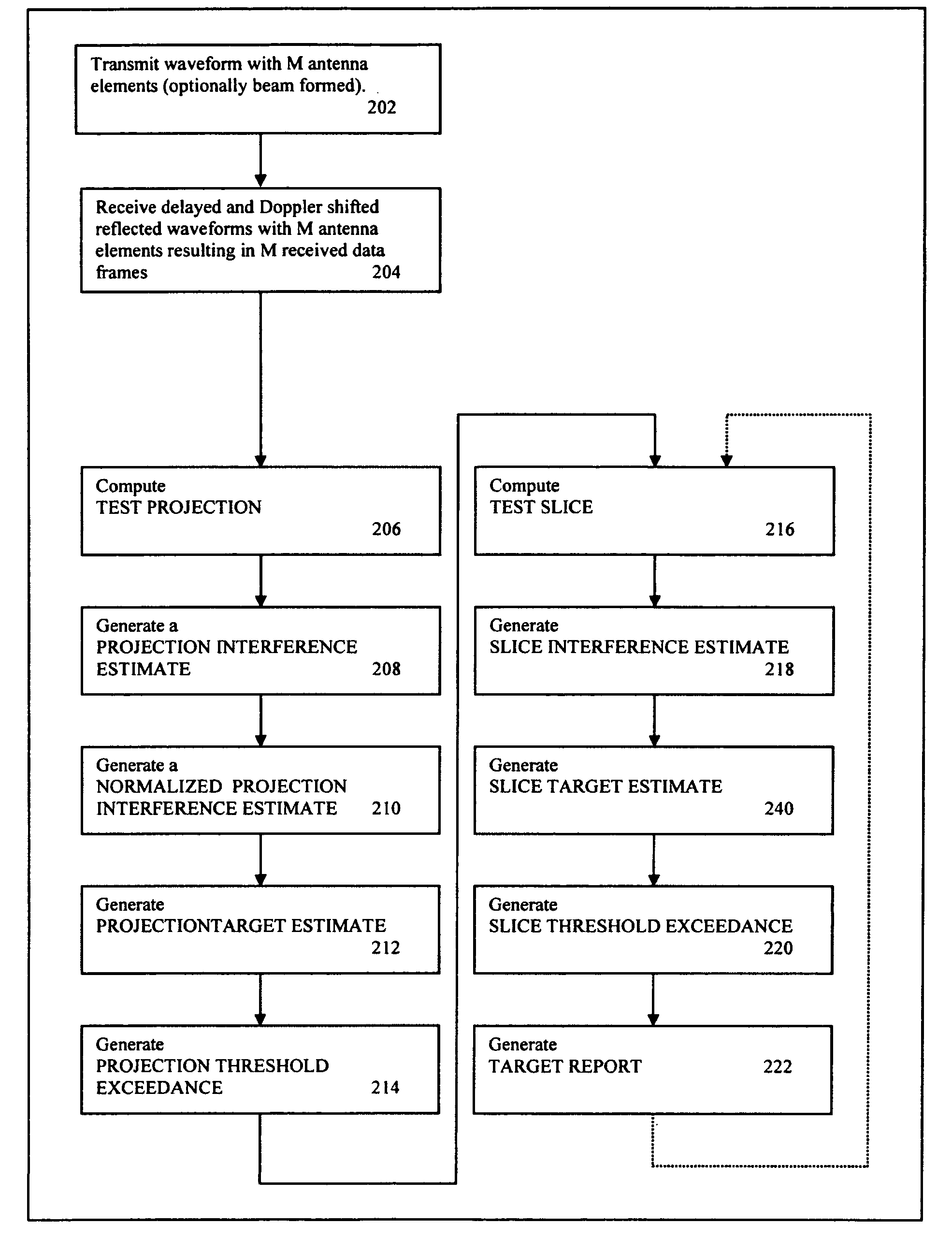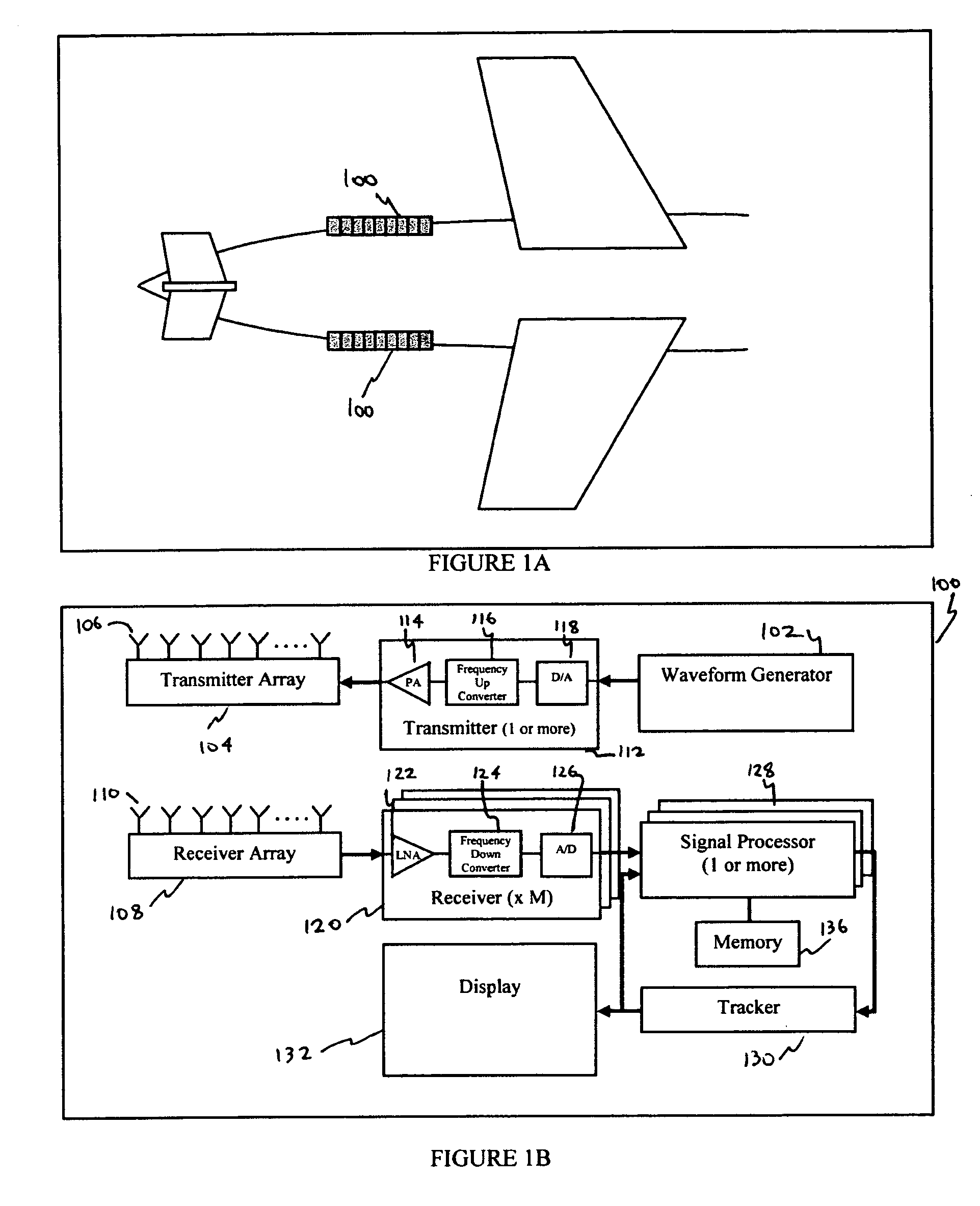System and method for detection and discrimination of targets in the presence of interference
a target detection and discrimination technology, applied in the field of spacetime adaptive processing (stap), can solve the problems of increasing the ambiguity of the doppler shift value, requiring a high prf, and prior art stap systems that require a high prf, so as to reduce or eliminate the time delay-doppler shift ambiguity trade-off
- Summary
- Abstract
- Description
- Claims
- Application Information
AI Technical Summary
Benefits of technology
Problems solved by technology
Method used
Image
Examples
Embodiment Construction
[0050]The following nomenclature and definitions are common to all embodiments of the invention disclosed herein and the claims.
[0051]“Range component” means a distance or time delay; “time delay” means a 2-way travel time of the transmitted signal and its reflection back; and
[0052]“Doppler component” means a Doppler shift or velocity; “Doppler shift” means perceived difference in frequency between the received and transmitted signals;
[0053]“Angle” means the perceived direction of the target relative to the reference direction;
[0054]“Cross-ambiguity function”—a measure of similarity of a transmitted signal and a received signal expressed with the following equation:
Ars=∫r(t+τ / 2)s*(t+τ / 2)exp[j2πvt]dt,
where:[0055]s(t) is the transmitted signal,[0056]r(t) is the received signal,[0057]τ is delay time, and[0058]v is Doppler shift.
[0059]“Projection of a cross-ambiguity function” means
Pφ(u)=∫|Ars(u cos φ−v sin φ, u sin φ +v cos φ)|2dv,
where:[0060]Ars (τ, v) is the cross-ambiguity functio...
PUM
 Login to View More
Login to View More Abstract
Description
Claims
Application Information
 Login to View More
Login to View More - R&D
- Intellectual Property
- Life Sciences
- Materials
- Tech Scout
- Unparalleled Data Quality
- Higher Quality Content
- 60% Fewer Hallucinations
Browse by: Latest US Patents, China's latest patents, Technical Efficacy Thesaurus, Application Domain, Technology Topic, Popular Technical Reports.
© 2025 PatSnap. All rights reserved.Legal|Privacy policy|Modern Slavery Act Transparency Statement|Sitemap|About US| Contact US: help@patsnap.com



